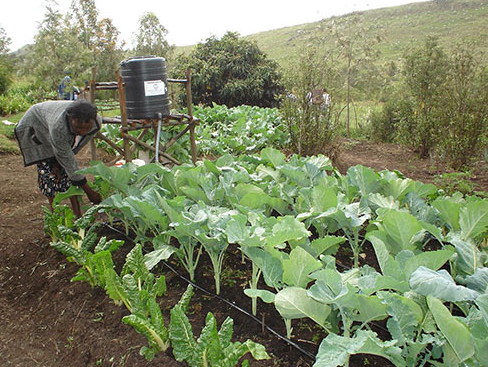Wycliffe Obwoge, an agronomist says the saved water can be used in another round or on similar irrigation field.
At the same time the method allows for application of liquid fertilizers and other farm chemicals like pesticides in a more precise and economic way, he says.
This reduces wastage of pesticides, water, fertilizer and other resources in a greenhouse or open field.
Reduced disease
Overhead irrigation methods encourage accumulation of moisture in the environment. Moisture creates good microclimate for disease causing germs like fungi to thrive.
But drip irrigation will limit water supply to the stem base and it will go direct to the soil.
At the same time, drip irrigation gives farmers more latitude to control water supply. If there are no plants at given outlets, the farmer can temporarily close those holes with a cellotape, allowing for the water to flow to other areas instead of going to waste.
Uniform yield
Consistent amount and rate of lo of water and any other resources included leads to equal supply of nutrients.
For this reason, the crop growth rated and final yield is uniform, the Amiran Kenya Agronomist says.
Initial setting up of the pips in what may take more labour but later application will be easy, because a farmer will only require turning on the water tank tap on. No movement of sprinklers or watering cans through the farm.
Minimal weeds
Localised release of water also reduces growth of weeds. Crops will also grow faster than weeds because they have sufficient water and nutrients for growth unlike weeds.
Amiran Kenya supplies greenhouses together with the drip irrigation. They also distribute the drip irrigation equipment for open field.
For any questions, Mutune can be reached on +254715787635.


















